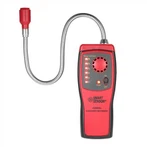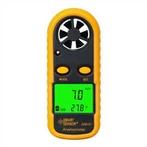Construction and determination of tool microscopes
1. Small tool microscope
It is composed of a precision cross moving table and an observation microscope. It is a small tool microscope. It is designed to be easy to use, so the pillars will not tilt. The lighting equipment is also simple. Although it is easy, it is comparable to many accessories. Once connected, various measurement tasks can be added.
2. Large tool microscope
Its rotary worktable is assembled and made of a precision cross-shaped moving stage and an observation microscope. The penetrating lighting equipment uses centrifugal lighting. The pillars and worktable are integrated and can be tilted left and right, making thread measurement very convenient. The eye observation part is equipped with a projection device for observing projected images.
Tool Microscope Measurement
1. Cartesian coordinate measurement
When measuring, the rectangular coordinate direction of the object to be measured must be consistent with the moving direction of the cross-shaped table before measurement can be carried out. When using Cartesian coordinate measurement, the Cartesian coordinate value can be read directly from the movement amount of the cross moving table. If it is a large tool microscope, the image on the aiming hole Cartesian coordinate measurement can be used to connect the observation eye to correctly measure, and when measuring the right angle of the object When correcting the coordinate direction and the cross moving table, it is very convenient to use the assembled rotary table installed on the large tool microscope. As for the small tool microscope, only the rotary table is attached.
2. Angle measurement
It can be measured using a rotating table or angle observation lens. Generally speaking, angle observation lenses have better accuracy.
3. Height measurement
Although a small tool microscope cannot measure the height, if a measuring instrument is attached to the upper end of the support and the height is measured by moving the microscope up and down. However, it is very difficult to accurately measure due to errors in the depth of focus, the inclination of the support, and the errors between the gauge and the optical axis.
4. Pore diameter measurement
Generally, an angle observation lens is used for measurement, but for large tool microscopes, a superimposed image observation lens or an optical detector can be used. That is, a superimposed image lens is used to overlap the two generated images, and then the same is true on the opposite side. Therefore, The amount of movement displays the inner diameter of the hole. If an optical detector is used, first install it on a 3x object lens, then align the moving direction of the detector and the workbench, and then adjust the overlapping line in the observation mirror to be parallel to the crosshairs of the observation lens. The measuring element is brought into contact with the hole surface. Finally, the feed on the Y-axis is used to correct the reverse movement of the overlapping line, and the feed on the X-axis is used to make the overlapping line clamp the ten sub-lines of the observation lens, so that the measured value on the X-axis can be read. The same is true for the hole on the opposite side, so the difference between the readings plus the diameter of the detector can be used to obtain the inner diameter of the hole.






